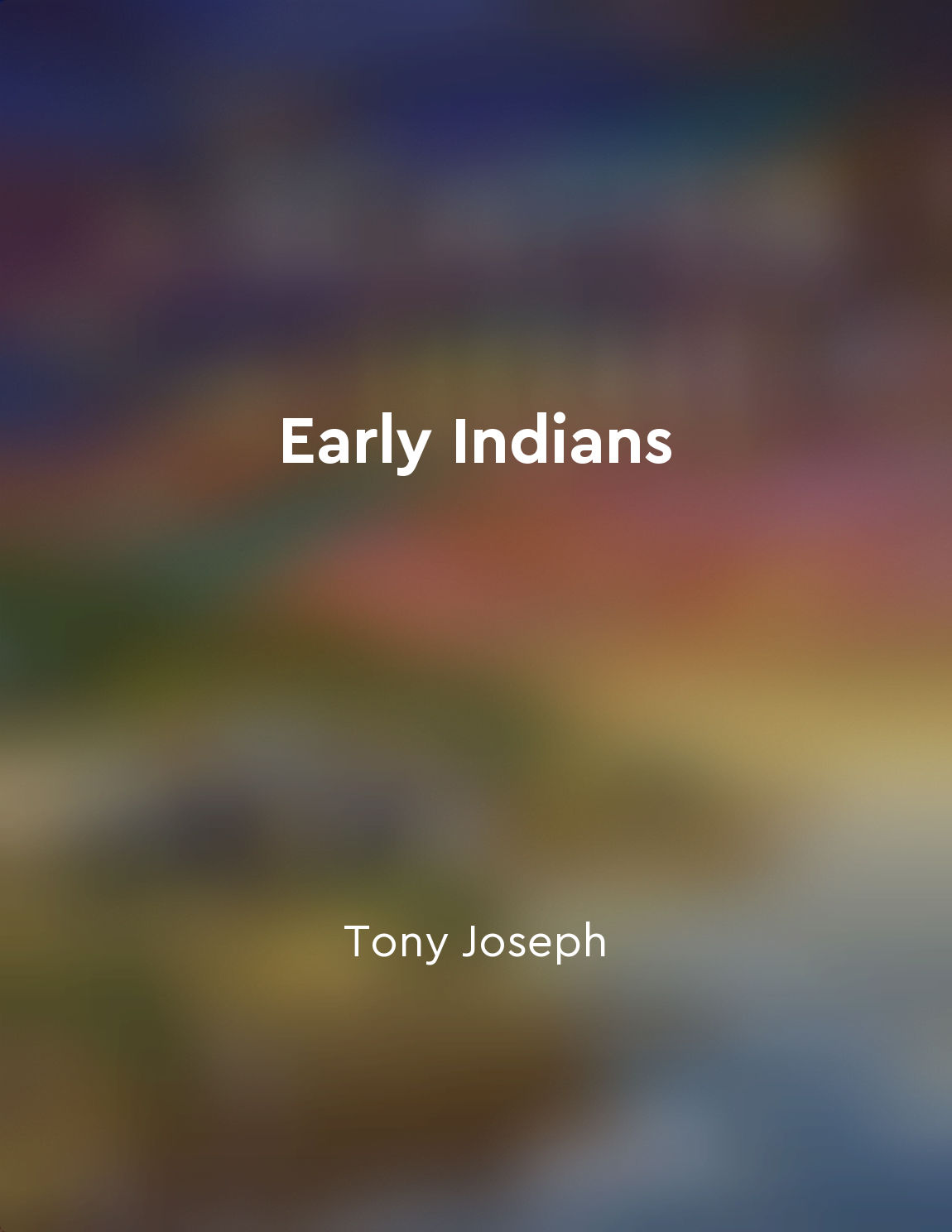Ancestral South Indians are the descendants of the first migrants from "summary" of Early Indians by Tony Joseph
The genetic evidence tells us that the people who first arrived in the subcontinent around 65,000 years ago were the ancestors of present-day South Indians. These early migrants came from Africa, and over tens of thousands of years, they spread across the subcontinent. They were the first inhabitants of the land that we now call India. As these first migrants settled in different parts of the subcontinent, they started to develop distinct genetic characteristics. In the southern part of India, these early settlers mixed with another group of migrants who came from the north around 20,000 years ago. This mixing of populations gave rise to the Ancestral South Indians, who are the ancestors of present-day South Indians. The genetic studies show that the Ancestral South Indians are a mix of two ancient populations - the first migrants from Africa and the later migrants from the north. This genetic mixing is what makes the people of South India genetically distinct from other populations in the subcontinent. It is this unique genetic makeup that sets them apart and makes them the descendants of the first migrants who arrived in India tens of thousands of years ago. The concept of Ancestral South Indians being the descendants of the first migrants is supported by a wealth of genetic evidence. This evidence comes from studies of ancient DNA, modern DNA, and comparisons with populations from other parts of the world. All these different lines of evidence converge to tell a consistent story - that the people of South India have a deep connection to the earliest inhabitants of the subcontinent. Understanding the genetic history of the people of South India is not just a matter of academic interest. It has important implications for our understanding of the past and for our sense of identity. By tracing their ancestry back to the first migrants, the people of South India can take pride in their deep roots in the land and their unique genetic heritage. This knowledge helps us appreciate the rich tapestry of human history and the complex interplay of migrations, mixing, and adaptation that have shaped the people of the subcontinent over tens of thousands of years.Similar Posts
The caste system played a significant role in Indian society
The caste system, an institution deeply rooted in Indian society, has had a profound impact on various aspects of life in the s...
Policies should support human migration for cultural exchange
Policies that facilitate human migration can promote cultural exchange, enriching societies with new ideas, perspectives, and t...
The IT boom in India has positioned the country as a global leader in technology
The rapid growth of the information technology (IT) industry in India has catapulted the country onto the global stage as a maj...

Cultural anthropology complements physical anthropology in understanding human societies
Cultural anthropology and physical anthropology are two distinct subfields within the broader discipline of anthropology. While...
The role of technology in shaping India's history is significant
The impact of technology on shaping India's history cannot be understated. It has played a crucial role in transforming the cou...
South Asian literature has produced works of profound beauty and insight
Throughout history, the literature of South Asia has captivated readers with its profound beauty and insightful perspectives. T...

Dravidian influence on South Indian culture
One of the most significant aspects of South Indian culture is the deep-rooted influence of the Dravidian civilization. This in...
